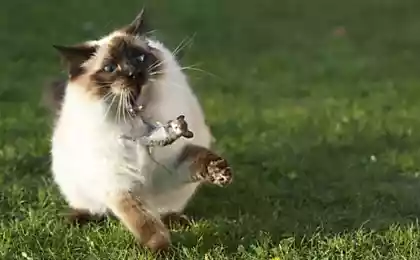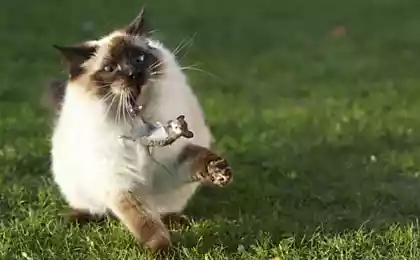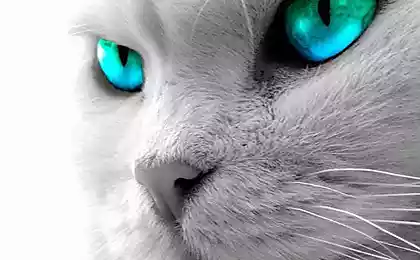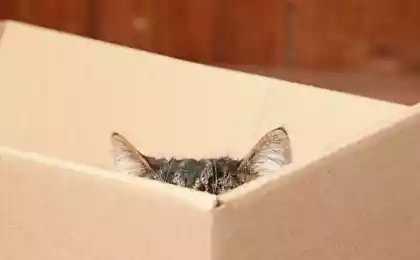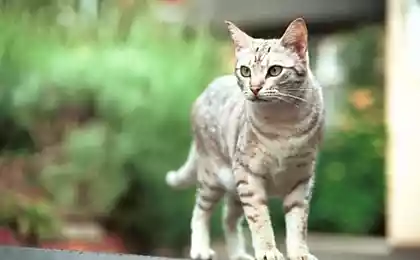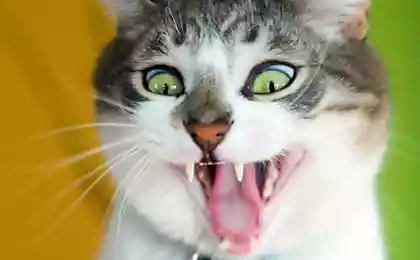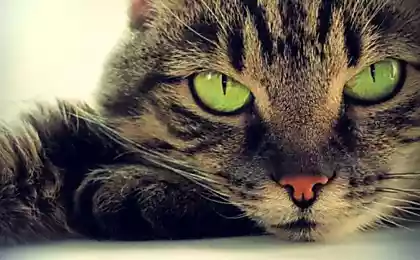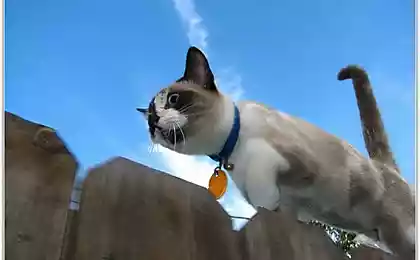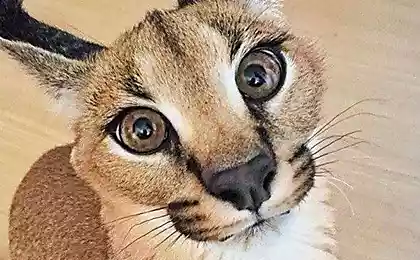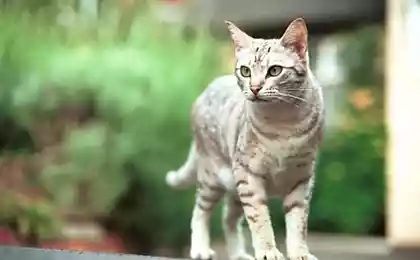798
Why do cats love boxes? The answer is found!
The answer to thousands of fans of cats question found!Indifference your cat to the new luxury special house — a very common phenomenon. But there is a subject that is guaranteed to pique her interest. This object is a simple box. Any box size and shape do not matter. Put the box on the floor, a chair, or a bookshelf and watch as your cat quickly will learn.
So what are we to do with the strange force of gravity of the empty packages, acting on our Pets? Like many other really weird things cats do, science hasn't fully figured out this feline mystery. However, it can be argued that the box will be in them the instinct of predators: cats are attacking from ambush, the boxes serve as their shelter during hunting and provide protection during the retreat. But that's not the only explanation.

Experts in the field of veterinary medicine and biology found a few interesting explanations. And when you will get acquainted with them, just understand that cats don't just love boxes, and really need them.
A box with a mustache
As you know, to understand the cat is extremely difficult. Usually these animals are difficult to study. However, there is a significant amount of research cat behavior, conducted on laboratory cats. These studies, many of which are aimed at improving animal habitats, was conducted more than 50 years, and have come to one conclusion absolutely clear:your furry friend in confined spaces feels comfortable and secure. In stressful situations box, or something similar to it, can have a huge impact on the behavior and physiology of a cat.
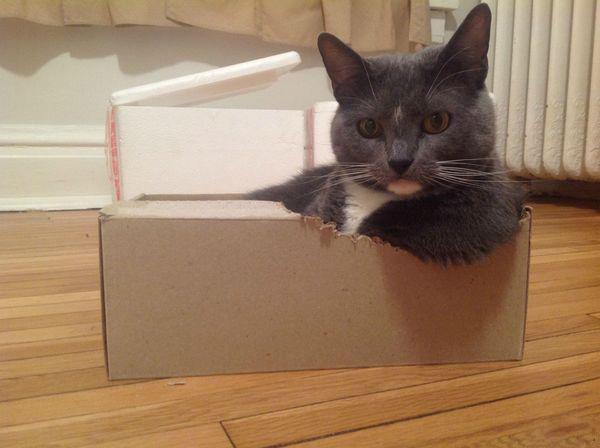
Veterinarian Claudia Vink from Utrecht University in the Netherlands, one of the researchers studying stress levels in the cat shelters. Working with domestic cats in an animal shelter, Vink gave one group of newly arrived cats access to a secluded boxes, and another group was deprived of any shelters. As a result, it has identified a significant difference in the level of stress in cats with a shelter, and in cats deprived of it. Animals from the first group to get used to new surroundings faster, were far less stressed in the initial stages of life in a shelter, and were easier to contact with people.
This makes sense when you consider that the first reaction of almost all the cats in stressful situations is to run and hide. "Zadavanie behavioral strategy species that help animals to cope with environmental changes and stress," says Wine.
This applies to both wild and domestic cats. Only instead of hiding on top of the tree, in a hole or a cave, your pet can find shelter in a Shoe box.
Box (anti-) social barrieris Also important to note that cats do not know how to solve the conflict. Quote from the book by Dennis Turner and Patrick Bateson
Cats: biology of their behavior": "Cats do not develop strategies of conflict resolution as it is done gregarious and more sociable animals. So they might try to circumvent a hostile collision."That is, instead of decisive action, cats tend to just hide from problems. Box in this sense can be a safe zone, a place where sources of anxiety, hostility and unwanted attention simply disappear.
The problem is that this explanation makes the box with the sign "heavy" nature of the cat and exposure to its stresses. However, I don't know about you, but I cat Maru from the video below, does not seem tense or scared.
The principle of "If it fits, I sits" ("If fit — up")Careful observers will note that in addition to boxes, many cats choose other strange places to stay. Some will cuddle in the sink. Others prefer shoes, bowls, bags, coffee mugs and other small limited space.
This brings us to another answer to the question, why is your cat like very small boxes (and other seemingly uncomfortable seats): it's cold.
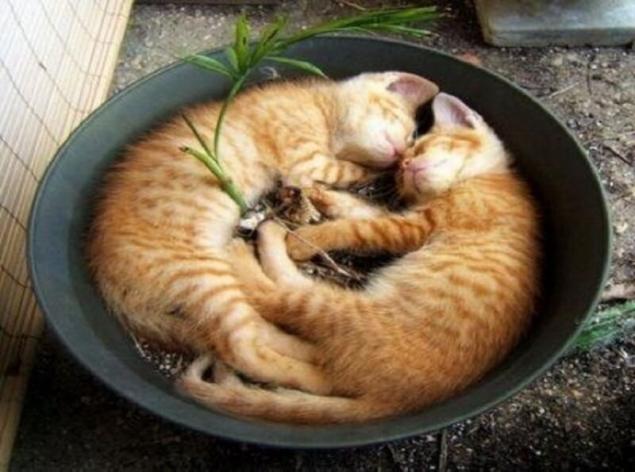
According to the study 2006 National research center, thermoneutral zone for a domestic cat is 30 — 36 degrees Celsius. This is the temperature range in which the cat is comfortable and does not need to produce additional heat to keep warm or expend metabolic energy to cool down. This range is above our 10 degrees. So often you can see the cat sprawled on the hot pavement in the middle of a hot summer day and enjoying the sun.
This also explains why many cats love to curl up in tiny cardboard boxes and other strange places. Corrugated cardboard is a great insulator and helps the cat to maintain body heat.
The same study showed that the temperature of the residential areas of most cats is approximately 22 degrees Celsius which is 14 degrees less than their thermoneutral temperature.
So, the answer is found: boxes are insulating, stress relieving zones; places where cats can hide, relax, sleep, and sometimes ambush on the huge, unpredictable apes they live with. published
P. S. And remember, only by changing their consumption — together we change the world! ©
Join us in Facebook , Vkontakte, Odnoklassniki
Source: www.factroom.ru/world/cat-box
So what are we to do with the strange force of gravity of the empty packages, acting on our Pets? Like many other really weird things cats do, science hasn't fully figured out this feline mystery. However, it can be argued that the box will be in them the instinct of predators: cats are attacking from ambush, the boxes serve as their shelter during hunting and provide protection during the retreat. But that's not the only explanation.

Experts in the field of veterinary medicine and biology found a few interesting explanations. And when you will get acquainted with them, just understand that cats don't just love boxes, and really need them.
A box with a mustache
As you know, to understand the cat is extremely difficult. Usually these animals are difficult to study. However, there is a significant amount of research cat behavior, conducted on laboratory cats. These studies, many of which are aimed at improving animal habitats, was conducted more than 50 years, and have come to one conclusion absolutely clear:your furry friend in confined spaces feels comfortable and secure. In stressful situations box, or something similar to it, can have a huge impact on the behavior and physiology of a cat.

Veterinarian Claudia Vink from Utrecht University in the Netherlands, one of the researchers studying stress levels in the cat shelters. Working with domestic cats in an animal shelter, Vink gave one group of newly arrived cats access to a secluded boxes, and another group was deprived of any shelters. As a result, it has identified a significant difference in the level of stress in cats with a shelter, and in cats deprived of it. Animals from the first group to get used to new surroundings faster, were far less stressed in the initial stages of life in a shelter, and were easier to contact with people.
This makes sense when you consider that the first reaction of almost all the cats in stressful situations is to run and hide. "Zadavanie behavioral strategy species that help animals to cope with environmental changes and stress," says Wine.
This applies to both wild and domestic cats. Only instead of hiding on top of the tree, in a hole or a cave, your pet can find shelter in a Shoe box.
Box (anti-) social barrieris Also important to note that cats do not know how to solve the conflict. Quote from the book by Dennis Turner and Patrick Bateson
Cats: biology of their behavior": "Cats do not develop strategies of conflict resolution as it is done gregarious and more sociable animals. So they might try to circumvent a hostile collision."That is, instead of decisive action, cats tend to just hide from problems. Box in this sense can be a safe zone, a place where sources of anxiety, hostility and unwanted attention simply disappear.
The problem is that this explanation makes the box with the sign "heavy" nature of the cat and exposure to its stresses. However, I don't know about you, but I cat Maru from the video below, does not seem tense or scared.
The principle of "If it fits, I sits" ("If fit — up")Careful observers will note that in addition to boxes, many cats choose other strange places to stay. Some will cuddle in the sink. Others prefer shoes, bowls, bags, coffee mugs and other small limited space.
This brings us to another answer to the question, why is your cat like very small boxes (and other seemingly uncomfortable seats): it's cold.

According to the study 2006 National research center, thermoneutral zone for a domestic cat is 30 — 36 degrees Celsius. This is the temperature range in which the cat is comfortable and does not need to produce additional heat to keep warm or expend metabolic energy to cool down. This range is above our 10 degrees. So often you can see the cat sprawled on the hot pavement in the middle of a hot summer day and enjoying the sun.
This also explains why many cats love to curl up in tiny cardboard boxes and other strange places. Corrugated cardboard is a great insulator and helps the cat to maintain body heat.
The same study showed that the temperature of the residential areas of most cats is approximately 22 degrees Celsius which is 14 degrees less than their thermoneutral temperature.
So, the answer is found: boxes are insulating, stress relieving zones; places where cats can hide, relax, sleep, and sometimes ambush on the huge, unpredictable apes they live with. published
P. S. And remember, only by changing their consumption — together we change the world! ©
Join us in Facebook , Vkontakte, Odnoklassniki
Source: www.factroom.ru/world/cat-box
Super ways to remove pain in the bone in the foot and improve the beauty of the foot
Unusually the healing power of pumpkin juice





